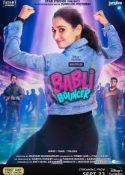 Srijit Mukherjee’s Hindi debut Begum Jaan, a big hit in its original Bengali version Rajkahini, was a failure in Hindi.
Srijit Mukherjee’s Hindi debut Begum Jaan, a big hit in its original Bengali version Rajkahini, was a failure in Hindi.
Srijit has an explanation. “This thought of representing the entire country through these women, I think that, was slightly contrived in a setup which backfired. I think I should have stuck to the original. Yeah, the language would have been Hindi, but, you know, the milieu should have been what was there in the original.”
Srijit feels Begum Jaan, unlike the original, was not spontaneous. “I think I planned it too much. This is to say, the original had a certain spontaneity to it, a certain organic nature. I thought I would tailor it to suit pan-India sensibilities. It didn’t, I mean, it didn’t require that. Because, in any case, there hasn’t been any film on the eastern side of the Partition.”
Srijit recalls, with much pleasure, the experience of making Begum Jaan , “I still remember the first day of shoot with Vidya Balan and Naseeruddin Shah. I cherish the fact that the Partition Museum at Amritsar has kept the script of Begum Jaan on display. And as the trailer of Heeramandi reinforces, the voice of the most oppressed, most marginalised is the voice of the revolution. The Bengali version Rajkahini was closer home. It was organic. The Eastern narrative of the partition, in any case, was always underrepresented. And, of course, the performances of Rituparna Sengupta, Jisshu Sengupta, Saswata Chatterjee, and Koushik Sen. As Vidya herself admitted, Ritu’s was a more powerful performance. For me, Begum Jaan was an unforgettable experience. Working with Mr Bachchan (who did the voiceover), Asha Bhosle, and the incredible Vidya Balan.”









